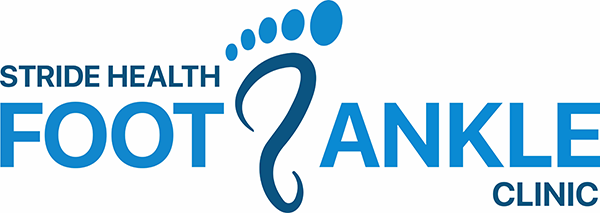What are corns and calluses?
Corns and calluses are hard, painful areas of skin that often develop on the feet. They happen when the skin tries to protect an underlying area from injury, pressure, or rubbing.

Corns
Corns are smaller than calluses and have a hard centre surrounded by inflamed skin. Corns tend to develop on parts of your feet that don’t bear weight, such as the tops and sides of your toes and even between your toes. They can also be found in weight-bearing areas. Corns can be painful when pressed. If the pressure is not relieved, the hard skin can press on the soft skin below to cause a wound, ulceration or infection.
Hard corns tend to be small, and they occur in areas of firm, hard skin, where the skin has thickened or where there are calluses, and in bony areas of the foot.
Soft corns tend to be whitish in colour, with a rubbery texture. They more commonly occur between the toes, in areas of moist and sweaty skin.

Callus
A callus is a section of skin that has become toughened and thick, often discoloured with a slight yellow colour.
Callus forms over the bony area just under the toes or heel; areas of skin that take the person’s weight when they are walking; commonly appear where the skin frequently rubs against something, such as a bone, some item of footwear, or the ground.

What are the causes?
Some corns and calluses on the feet develop from an improper walking motion (gait abnormalities) and may also be caused by foot deformities, wearing shoes or sandals that are not a good fit.
The following risk factors are linked to a higher incidence of corns and calluses:
- shoes that are too tight or too high-heeled, causing pressure
- shoes that are too loose, causing friction
- a badly placed seam in a shoe that rubs against the skin
- wearing no socks or socks that do not fit well
- walking barefoot regularly, as the skin will thicken to protect itself
- older age, as there is less fatty tissue in the skin, which means less padding and a higher risk of developing calluses, especially on the ball of the foot.
Calluses often appear on the feet, but friction and pressure can also cause calluses on the hands.
What are the symptoms?
Corns and calluses can make a person feel as if they are walking on stones. The following signs or symptoms may indicate that there is a corn or callus:
- a raised, hardened bump
- a thick and rough area of skin
- skin that is flaky and dry or flaky and waxy
- pain or tenderness under the skin

If a corn or callus becomes very inflamed or painful, the patient should seek medical advice.
Treatments
Home
People with poor circulation, fragile skin, or nerve problems and numbness in the feet should consult health care professional before treating corns and calluses at home. People with diabetes, peripheral neuropathy, and peripheral arterial disease need to be particularly vigilant.
When treating corns and calluses at home, it is important not to remove too much skin, as this can lead to pain and infection.
Tips:
- soak the corn or callus in warm water for 5 to 10 minutes. Use a pumice stone or foot file to remove the hard skin gently. Circular or sideways motions help remove dead skin.
- use moisturiser every day on the feet. Products that contain salicylic acid, urea, or ammonium lactate help soften the dry skin to prepare it for filing.
- wear well-fitting shoes and socks with seams that do not rub the skin.
- deal with any foot pain or skin irritation as it arises.
- when trimming the toenails, cut straight across, and not down at angles or over the edges.
- wear clean socks every day and use talcum powder to prevent sweating.
Shoes and socks that fit properly, protective pads or insoles, and other self-care measure can help. Foam or silicone wedges may be used between the toes to reduce pressure on a corn. Orthotics are custom-made padded shoe inserts which may help people with an underlying foot deformity.
Do not try to cut off corns or calluses yourself.
Specialist
A HCPC registered podiatrist can assess your foot and recommend several treatments to help manage your corns and callus built up. This include enucleation of the corn (taking the corn out with a scalpel blade) and cutting back the callus built up on your feet.
A Podiatrist can also do a biomechanical assessment which includes assessing the way you walk and run to see if there are any abnormalities that may make you more prone to getting corns and callus. Based on the evaluation, a podiatrist can make props to put in-between your toes to reduce the pressure or insoles to redistribute the pressure from the high pressure areas so that the corns and callus formation is reduced.

